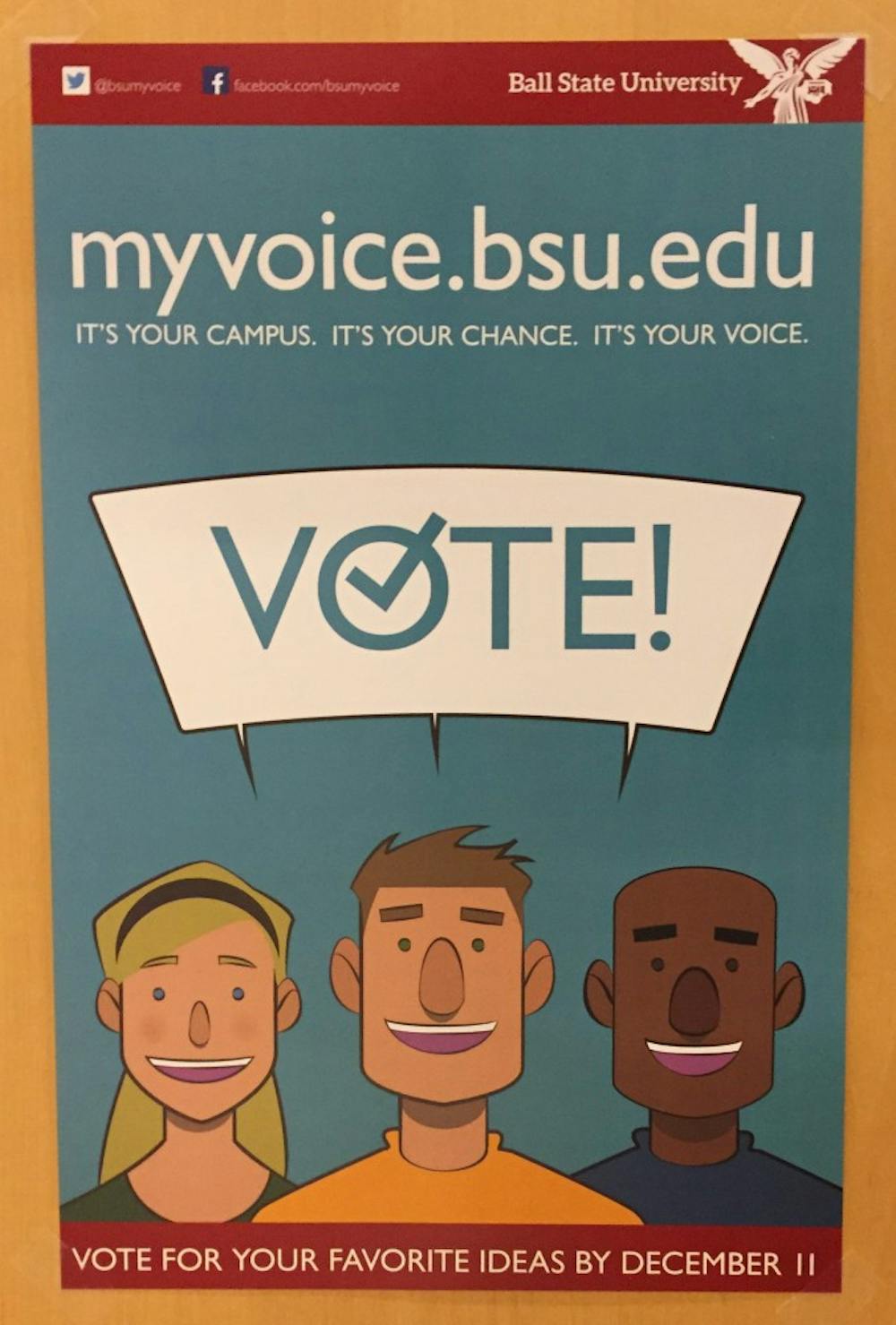For more updates on My Voice or to share your input, visit studentchange.bsu.edu or email myvoice@bsu.edu
The Digital Corps’ User Experience team held their last of two focus groups March 30 to help get data on Ball State’s Wi-Fi as part of the next steps in the My Voice project.
Wi-Fi on campus is the first project in the My Voice campaign, which is a student-centered project to make improvements on campus.
The team wanted to talk with students since they were the ones who use Ball State Wi-Fi most often.
They gave out surveys and asked people questions to try to get data, but a focus group was still necessary because each person they met gave them a slightly different perspective, said Billy Barry, a junior telecommunications major.
“At the end of the day, we need to really understand how and why people are using the wireless cause it’s getting to know the students and representing their interests,” Barry said. “We can’t just ask questions about the Wi-Fi. We need to know you guys and why you need it… we are writing a charter that, in the end, is going to affect upwards of 20,000 people and it’s really hard to capture that many needs in a survey.”
Cameron Mueller, a junior marketing major, said his team was thinking that the needs of the students were slightly different than what the team thought. The focus groups let them hone in and apply what they've learned to be able to present the best research possible at the end.
Chase Thiebaut, a junior computer science major, said he was astounded by how many locations came up as problem spots during the focus groups. They would have never considered testing some spots if it weren't for the groups bringing it up.
“[The project] is the closest and most efficient and effective form of a direct pipeline from students to the administration and the cabinet,” Thiebaut said. “To get a direct input like that that’s going to be heard is just a really cool opportunity in my opinion, and I’m very happy to be a part of it.”
The team acknowledged the work of other student groups who make change on campus, like the Student Government Association.
“A lot of the information that’s shown up has been that we might need to make some fixes to Ball State’s Wi-Fi, but also a big part of it is changing the way Ball State communicates and changing the way Ball State talks to its students and the way Ball State’s departments talk to each other,” Barry said.
He said SGA was crucial in this because it's a unifying force on campus that touches everyone else.
The team said it is hard to say a timeline for when the charter will be done, but when it is completed it will be presented to the president’s cabinet. They do not have to approve the charter because it is comprised of suggestions and information.
Phil Repp, vice president for information technology, said he is ecstatic about the project.
Seth Winslow, a sophomore computer science major, attended the focus group to explain the problems and frustrations he has experienced with campus Wi-Fi.
“I thought the group was very effective, it was good to get some ideas out there and let your voice be heard. Hopefully change will come about,” Winslow said. “Student input is very, very, very important.
"Often, the university is serving the students, so it’s important that the students get involved and that they can voice their problems and concerns with the university, and then the university can go about and fix those so then in the future, it won’t be a problem.”



